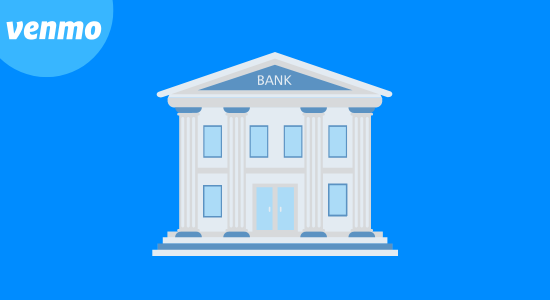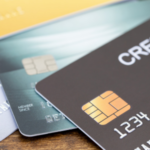The need for fast and convenient money transfer methods has become more critical as the world becomes increasingly digital. Venmo, a mobile payment service, has gained immense popularity recently for its ease of use and accessibility. However, many users have reported difficulties adding money to their Venmo account without a bank account. Fortunately, several ways exist to add funds to Venmo without needing a bank account. This guide will explore these methods and answer some commonly asked questions regarding adding money to Venmo.
Can you add money to Venmo without a bank account?
Yes, you can add money to Venmo without a bank account. Linking your bank account or debit card is the most common way to add money to your Venmo account. However, alternative ways exist to add cash to Venmo without a bank account. Here is how to do it:
Add money to Venmo using a credit card
Venmo also allows you to add money to your account using a credit card. However, Venmo charges a 3% fee for this option. To add money using a credit card:
- Open the Venmo app and go to the settings.
- Select “Payment Methods” and tap “Add Bank or Card.”
- Enter your credit card information, and Venmo will verify your card by charging a small amount, which you’ll need to confirm. Once your credit card is verified, you can add money to your Venmo account.
Add money to Venmo using a prepaid debit card
You can also add money to Venmo using a prepaid debit card. However, you must ensure that the prepaid debit card is compatible with Venmo. Here’s how you can add money using a prepaid debit card:
Step 1: Open the Venmo app and tap on the “☰”icon in the upper-left corner of the screen.
Step 2: Tap on “Payment method” and then tap on “Add bank or card.”
Step 3: Select “Card” in the menu that pops up.
Step 4: Enter your prepaid debit card information and the money you want to add.
Step 5: Tap “Add” and follow the prompts to complete the transaction.
Receive money from other Venmo users.
If you don’t have a bank account or a card to link to Venmo, you can still use the app to receive money from others. If someone owes you money, you can request they pay you through Venmo. Once you receive the money, it will be added to your Venmo account balance, which you can use to pay others.
Here’s how to check if you have received money on Venmo:
Step 1: Open the Venmo app and tap on the “☰”icon in the upper-left corner of the screen.
Step 2: Tap “Notifications” to see if anyone has sent you money.
Step 3: If someone has sent you money, tap “Accept” to add the money to your Venmo balance.
Are any fees associated with adding money to Venmo without a bank account?
No fees are associated when adding money to Venmo without a bank account as long as you have utilized the correct method to add funds. Venmo does not charge any fee for adding money from a linked debit or credit card. However, if you add funds using your credit card, you’ll be charged a 3% fee. Adding money from your debit card is free, but it’s worth noting that certain debit cards may incur a fee from your card issuer.
Another thing to remember is that while Venmo doesn’t charge fees for most transactions, there may be fees associated with using Venmo’s instant transfer feature or depositing checks. If you use the instant transfer feature, you’ll be charged 1.75% of the total amount transferred, with a minimum fee of $0.25 and a maximum of $25. Deposit fees will depend on the type of check you’re depositing and the timing of the deposit.
Do I Need A Checking Account For Venmo?
Yes, you need a checking account to use Venmo. The reason is that Venmo relies on your checking account to withdraw or deposit funds, as it is an active bank account. You can also link your debit or credit card, but it will use your checking account if you want to transfer funds. Ultimately, having a checking account is essential to use Venmo’s payment system, but it can also help manage your financial transactions efficiently.
Can You Use a Savings Account for Venmo?
Venmo does not allow customers to link or use their savings accounts to transact on the platform. This move helps to prevent fraud and money laundering, as well as comply with federal regulations. Savings accounts have certain limitations, such as a maximum number of monthly withdrawals, and using such accounts for Venmo transactions could result in the account holder incurring fees or penalties.
However, if you want to use your savings account to fund your Venmo account or make transactions, you can transfer the funds to your checking account and then link your checking account to Venmo. Depending on your bank’s policies regarding transfers between accounts, this process may take longer, but it is a viable option.
How Many Bank Accounts Can You Have on Venmo?
Venmo allows users to link up to two bank accounts to their Venmo account, either checking or savings accounts. This allows for greater flexibility in managing your funds, as you can choose which account to use for specific transactions. For example, you might link your primary checking account for regular payments and use a secondary savings account for occasional transfers to your Venmo balance. Also, having multiple bank accounts can be a backup in case one account is unavailable or receives a payment error.
Conclusion
Adding money to your Venmo account is vital when you want to conduct transactions with your peers and family members. None of the methods above are complicated or time-intensive, and choosing the best approach for you can make a difference in how you experience Venmo. Regardless of the way you use it, be sure to double-check to avoid any mistakes. If you follow the proper steps, adding money to Venmo without a bank account is straightforward.




